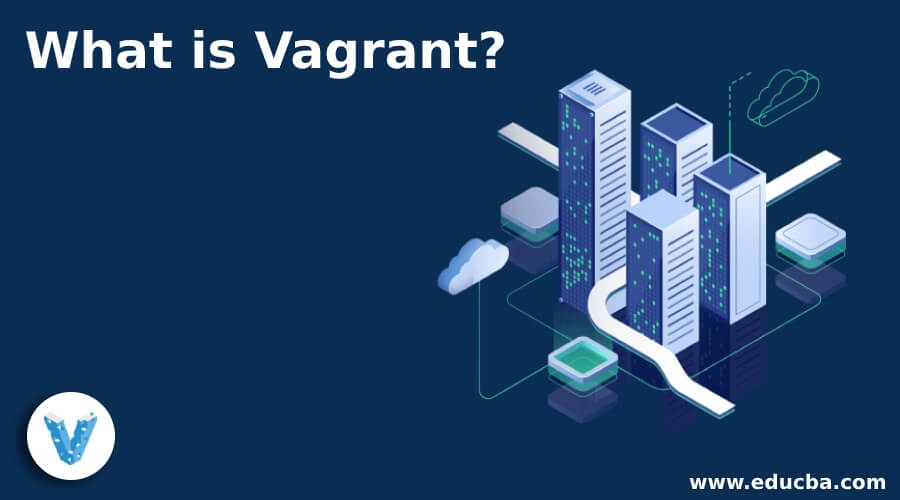Updated July 4, 2023

What is Vagrant?
A vagrant is a tool in a single workflow for creating and controlling virtual machine environments. Vagrant offers a quick and easy-to-use command-line client called Vagrantfiles, for handling these settings, focusing on automation, and an interpreter for text-based definitions of what each world looks like. It cuts startup time for the application environment and boosts output parity. It is Ruby-written open-source software, ensuring that anybody can share, update, and change it. While many hypervisors of virtual machines have a command-line interface, the provisioning of virtual machines with these systems can be accomplished directly or through shell scripts. The value of Vagrant is consistency, interoperability across different platforms, and a more consistent solution that could be used for any virtual machine operating on top of any other device by adding a layer.
How does Vagrant Work?
Vagrant is very easy to use and can be useful for a wide variety of individuals. It lets developers separate dependencies from multiple devices and operating systems and customize code. It offers disposable environments for operations engineers and reliable workflows for developing and testing their management scripts. Without needing to think about environmental configuration, It lets designers work on the front end. The uses of Vagrant, however, extend beyond these designations as it offers a convenient and effective way for anyone to build virtual worlds.
Vagrant Workflow
Regardless of your position as a creator, operator, or designer, It offers the same simple workflow. It utilizes a declarative configuration file that defines all the specifications of the applications, packages, configuration of the operating system, users, and more.
- For Operator: Vagrant provides the operations engineer or DevOps engineer with a disposable environment and reliable workflow to build and validate infrastructure maintenance scripts. Using local virtualization such as VirtualBox or VMware, operations engineers can easily test items such as shell scripts, Chef cookbooks, Puppet modules, and more. In the same workflow and setup, the engineer may also monitor these scripts on remote clouds, such as AWS or RackSpace.
- For Designer: In order to concentrate on doing what designers do best, Vagrant will automatically set up everything needed for the web app. The designer does not have to think about keeping the software running again and again until a client configures Vagrant.
- For Developer: Within a single disposable, compatible environment, Vagrant can isolate dependencies and their setup without losing any of the resources that we used to work with editors, debuggers, browsers, etc. Other team members will build their programming environments from the same configuration, but if the developer operates on Linux, Windows, and Mac OS X, all team members execute code in the same environment designed in the same way against the same dependencies.
Why Vagrant?
In order to optimize efficiency and versatility, It is a simple to customize, scalable, and reproducible working environment designed on top of industry-standard technologies and managed by a single coherent workflow. Machines on top of AWS, VirtualBox, VMware, or some other vendor are supported. The software can be automatically mounted and configured on the virtual machine by industry-standard provisioning tools such as Chef, shell scripts, or Puppet. Vagrant makes it possible for the creator to build a local framework that copies the environment in which the code will actually be implemented. But it must have the same libraries, methods, dependencies, versions, operating systems, etc.
Features
We should note here that Vagrant really wins over other related resources in certain ways. The features mentioned below are the key ones that make it possible for Vagrant to be fast, efficient, and convenient.
- Convenience: When you figure out that the tool parallels production environments by having the same operating system, packages, customers, and settings, Vagrant becomes much more useful, helping to reduce errors and conflicts when user code is implemented in the production world.
- Simplicity: The method of setting up the construction environment is much simpler and quicker for Vagrant. Since it is an open-source application, it is free to download and distribute. Regardless of the role of users in the development phase, they get the ability to leave Vagrant with the spin-up of a virtual machine to ensure that the process runs seamlessly as the tool uses a declarative configuration file with all program specifications, packages, the configuration of the operating system and users.
Recommended Articles
This is a guide to What is Vagrant?. Here we also discuss the introduction and features and how it is useful for building and maintaining virtual machine systems. You may also have a look at the following articles to learn more –
